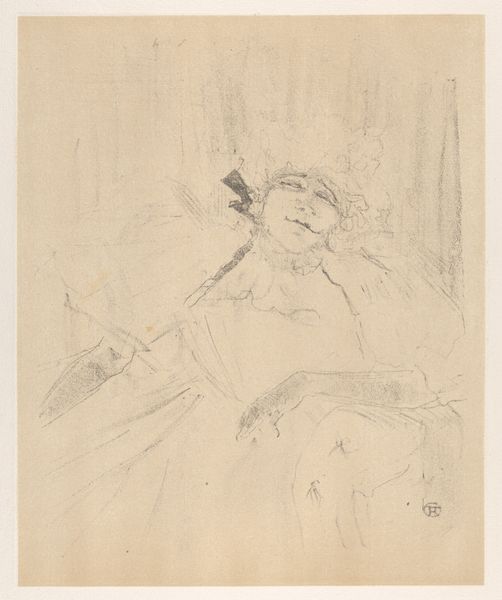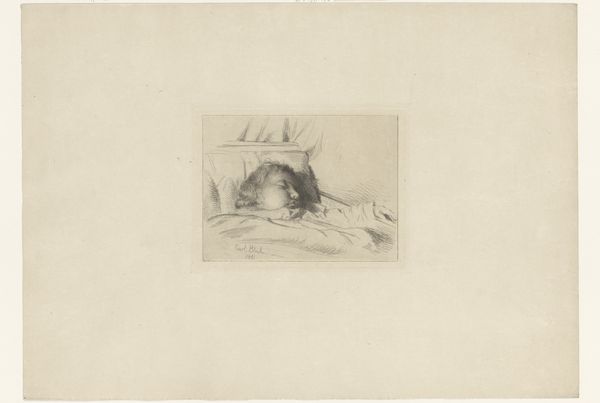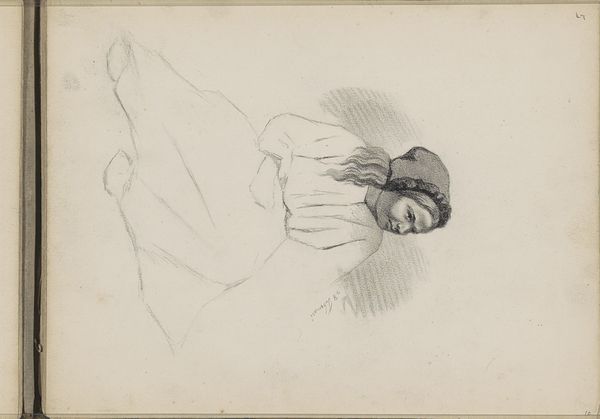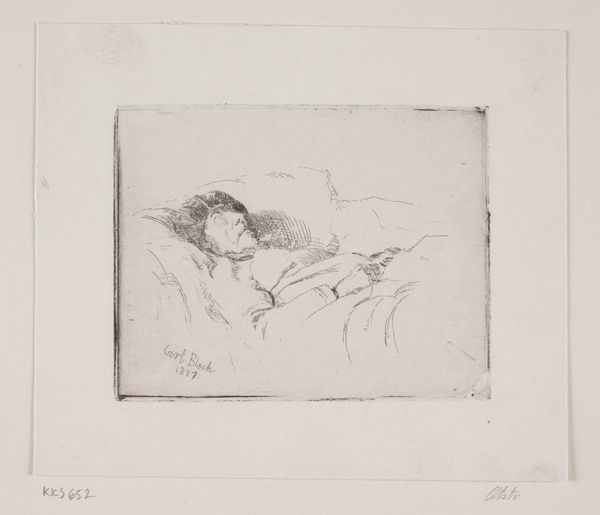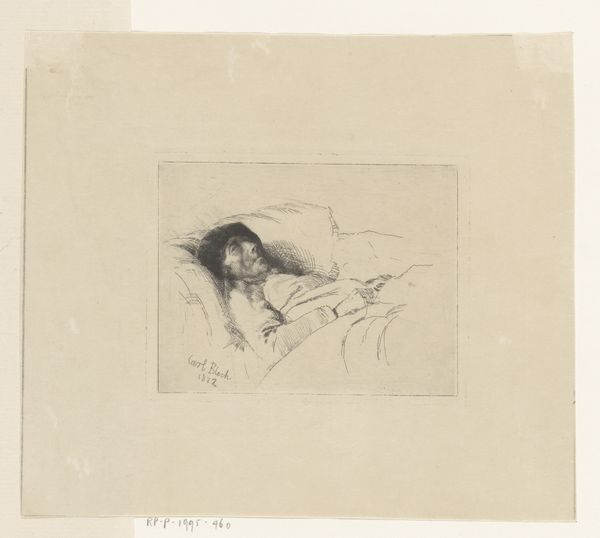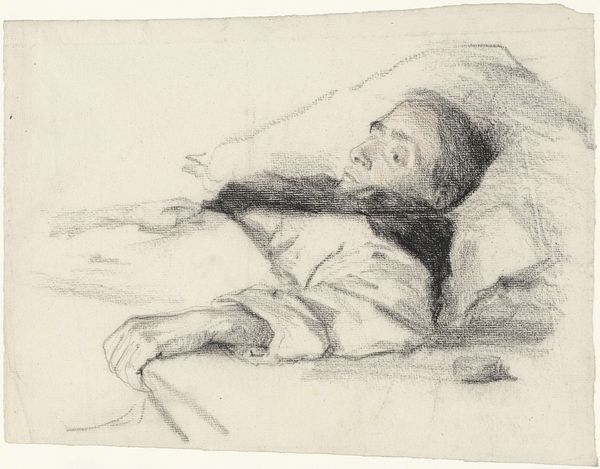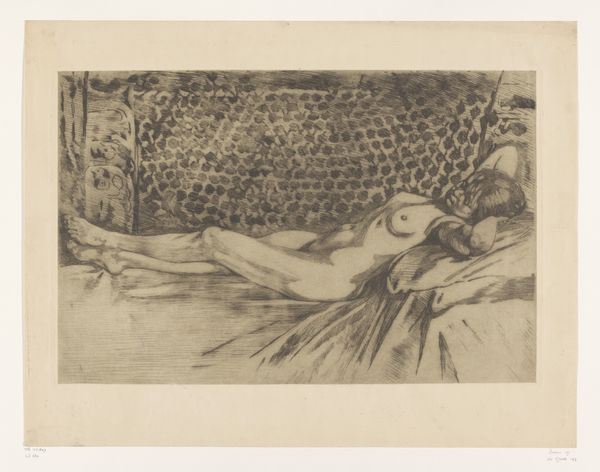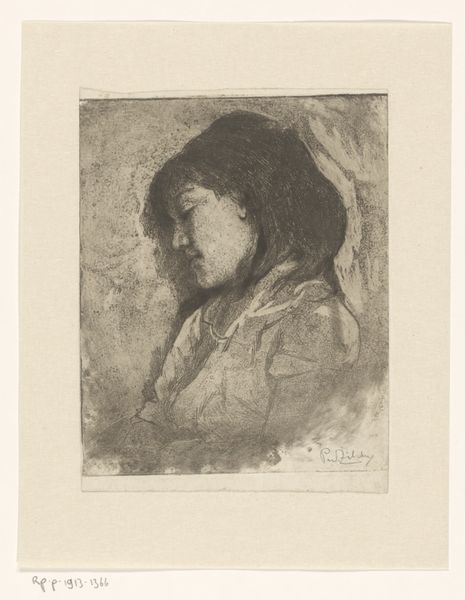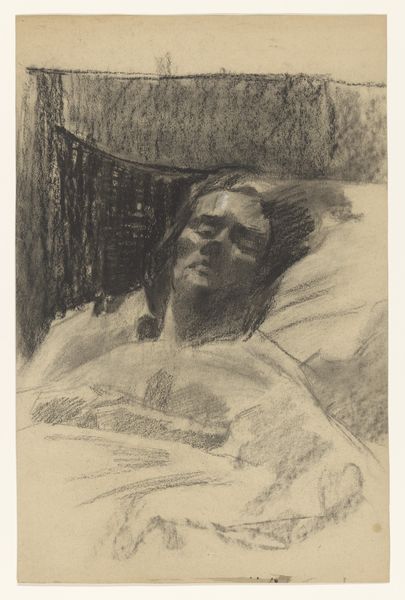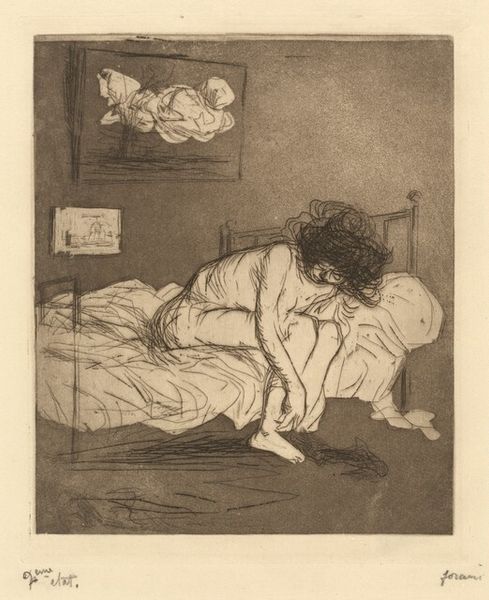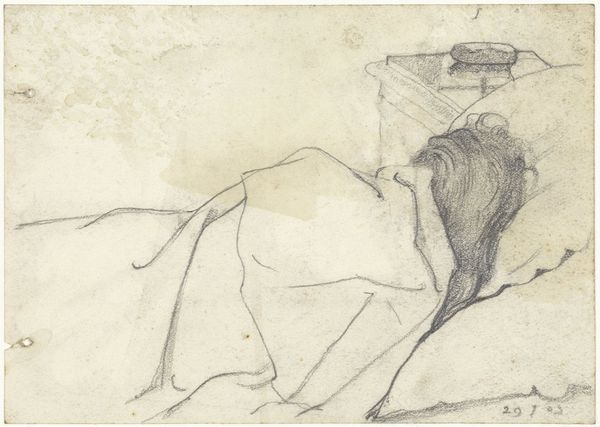
drawing, pencil
#
portrait
#
pencil drawn
#
drawing
#
pencil drawing
#
pencil
#
realism
Dimensions: height 230 mm, width 147 mm
Copyright: Rijks Museum: Open Domain
Curator: This pencil drawing is titled “Slapend meisje,” or “Sleeping Girl,” made by Philip Zilcken, likely between 1867 and 1890, and housed here at the Rijksmuseum. Editor: The texture is what immediately strikes me. The artist's light touch creates such a soft, contemplative mood. She looks peaceful, almost ethereal, as though glimpsed in a dream. Curator: Right. Let's look closer at Zilcken's methods. This isn't a highly rendered, academic drawing but rather a quick, gestural study, judging by the visible sketch lines that describe her form. We can tell he wanted to capture a moment. The use of pencil lends itself well to that sense of immediacy, wouldn't you say? Editor: I agree. What is the social position of this girl? Her simple dress and the implied interior—though sketched rather sparsely in the background— hint at a working class environment. There’s a poignant contrast here. Sleep, as respite from work, and art, in this cultural context of the late 19th century, as inaccessible high art. The subject, captured here is so relatable; the tools accessible, yet here we stand contemplating its inherent complexity. Curator: Precisely! The work resists academic polish; it champions the everyday, but that's why it resonates, surely. Think about what a pencil represents: accessibility, ease of use, part of the educational apparatus... He elevates the common tool to create something rather exquisite, in my view. It reflects back, perhaps even democratising the aesthetic experience itself, breaking barriers down to a minimum material base. Editor: It does suggest Zilcken was attentive to the social currents of his time, or at least engaged with questions of class representation and who gets depicted in art. Is she allowed the quiet dignity of slumber? The drawing subtly makes it a question, when we start deconstructing it this way. Curator: Indeed, although Zilcken does seem preoccupied with capturing light and form, or rather the form *through* light. I wonder about this relationship to impressionism, especially considering the date. It feels he almost wants to sculpt with tone rather than solid line. Editor: These brief, stolen moments reveal entire worlds if we're prepared to meet the image halfway. It shows a young working class woman in a moment of refuge, her existence imbued with the power and tenderness of art. Curator: To that end, I’m left pondering the possibilities held within something as ostensibly simple as a pencil line. Zilcken provokes a compelling meditation here.
Comments
No comments
Be the first to comment and join the conversation on the ultimate creative platform.
